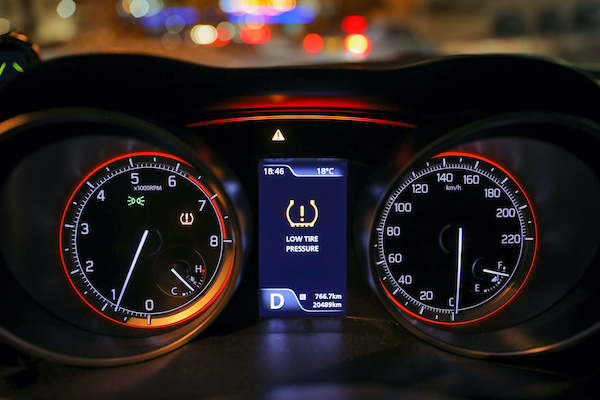
The Tire Pressure Monitoring System (TPMS) alerts drivers when tire pressure is too low, resulting in a potentially unsafe driving condition. The TPMS indicator is found on the dashboard. It is the indicator in the shape of a U with an exclamation point in the middle. An illuminated TPMS indicator means that the tire pressure of your vehicle is low. Low tire pressure leads to undue tire wear and potentially tire failure. Understanding the importance of tire pressure and identifying a TPMS indicator is key to practicing safe driving habits and ensuring the overall longevity of your vehicle.
Overinflation and Underinflation
Too much or too little air pressure in your tires can be detrimental to your vehicle. Overinflated tires lead to reduced traction, excessive wear on the tires, and heavier road impacts. An overinflated tire shows wear at the center of the tread. Underinflation of the tire causes a diminished response, poor fuel economy, uncontrolled heat, and tire overload. Underinflated tires have premature wear at the edges of the treads.
Understanding the TPMS Indicator
An unknown light popping up on the dashboard is scary, but if you know what the TPMS indicator is and how to react to it, you're in great shape. The first thing to do when a TPMS warning light comes on is to check the tire pressure. You can manually do this with a tire pressure gauge. Test each tire with the pressure gauge. The appropriate pressure can be found on the driver's door jamb or owner's manual. If any tire tests low, fill the tire with air until it is at the correct level. This procedure could return your tires to the proper pressure level and shut off the TPMS indicator.
Different Types of TPMS Alerts
The TPMS has several styles of alerts. Understanding what each one means is vital. A TPMS that comes on and stays on while you're driving indicates at least one tire has low pressure. A TPMS that flashes on and off could mean that temperature fluctuations are causing tire pressure levels to drop to or below the alert threshold. This typically occurs overnight when temperatures drop and go away during the day as temperatures increase. A flashing TPMS that continually flashes at 60 to 90-second intervals when you start your car could indicate that the TPMS is faulty and needs repair or replacement.
For any concerns or questions about the TPMS, we invite you to bring your vehicle to our auto repair shop today!